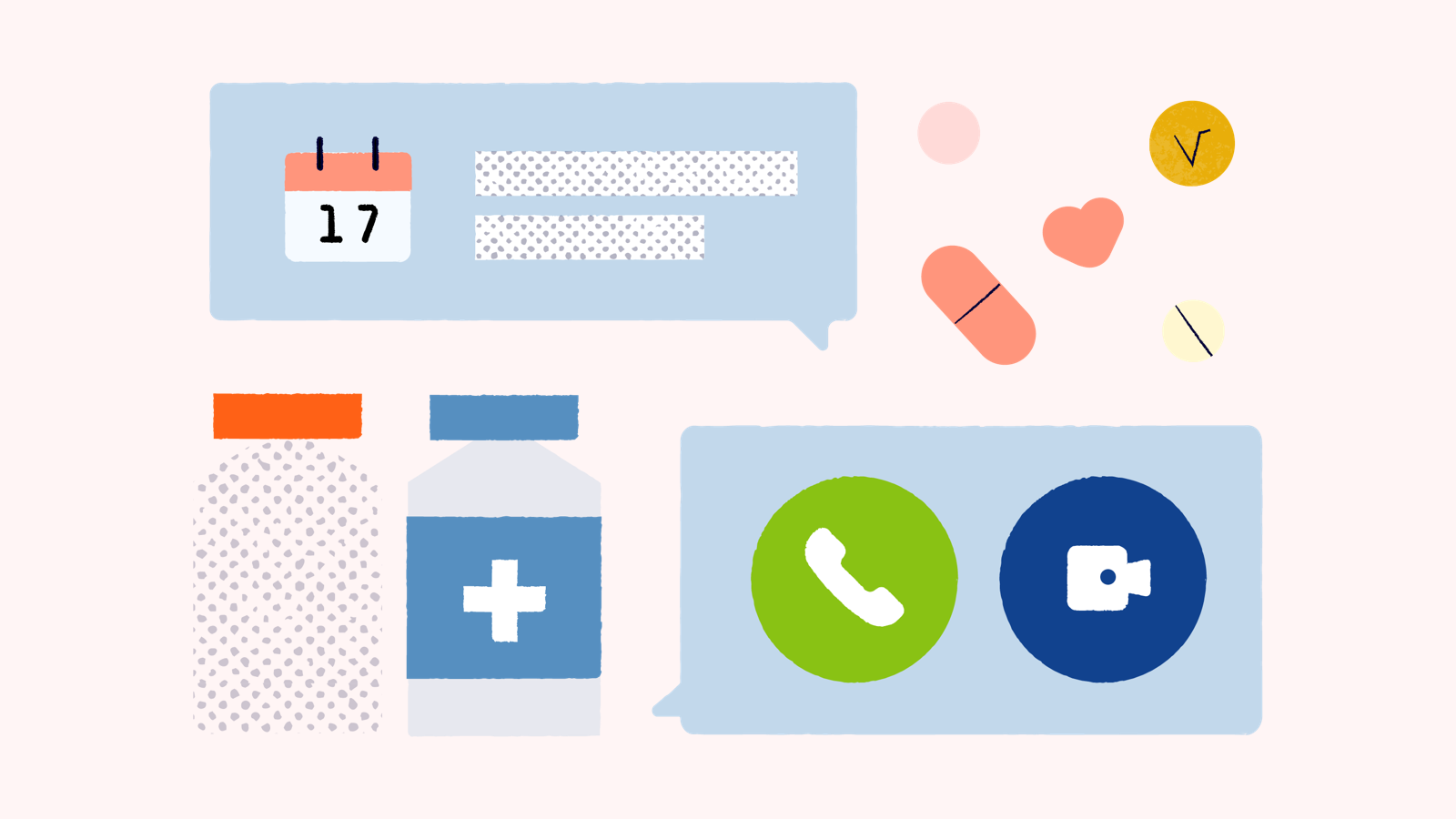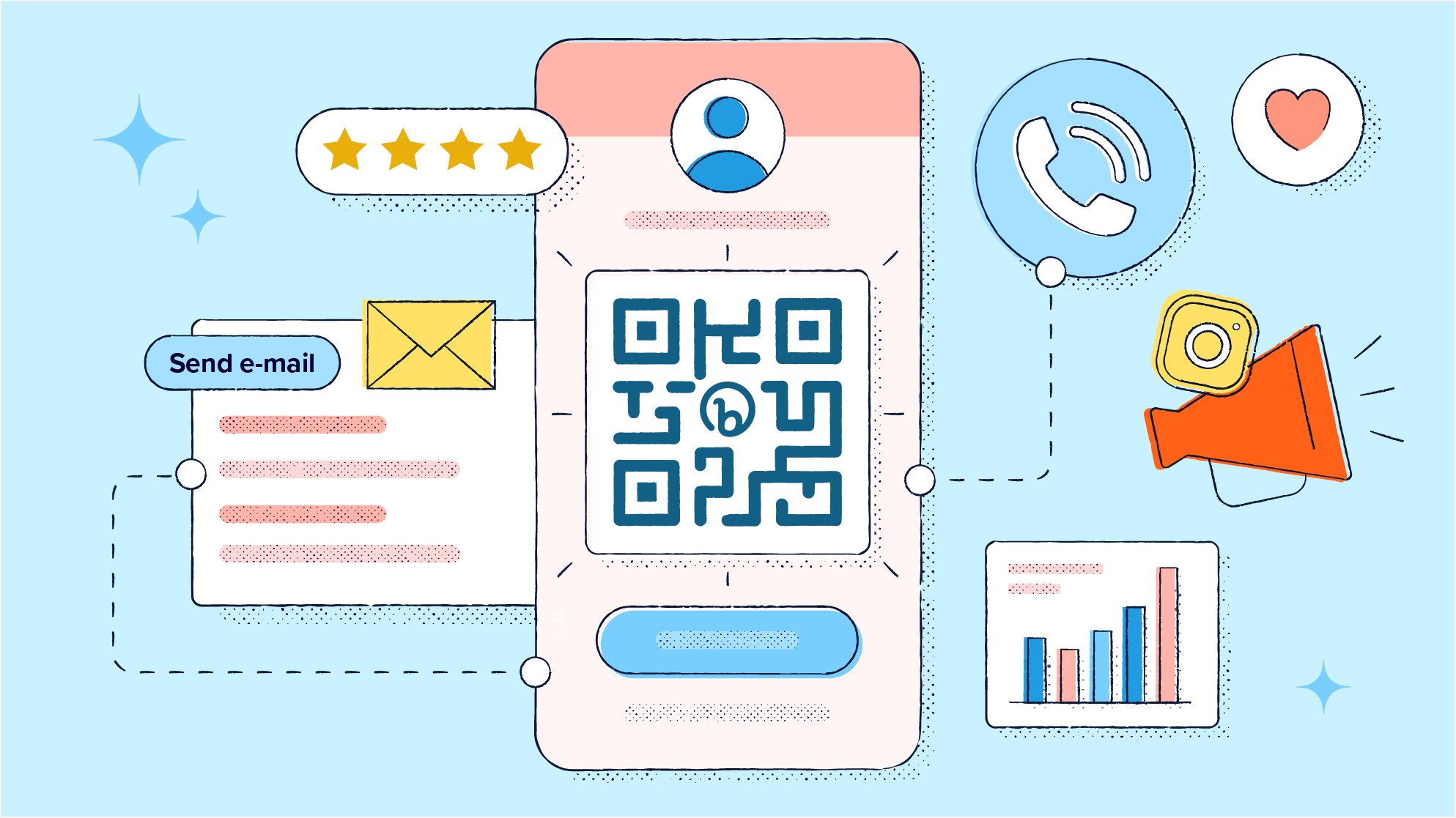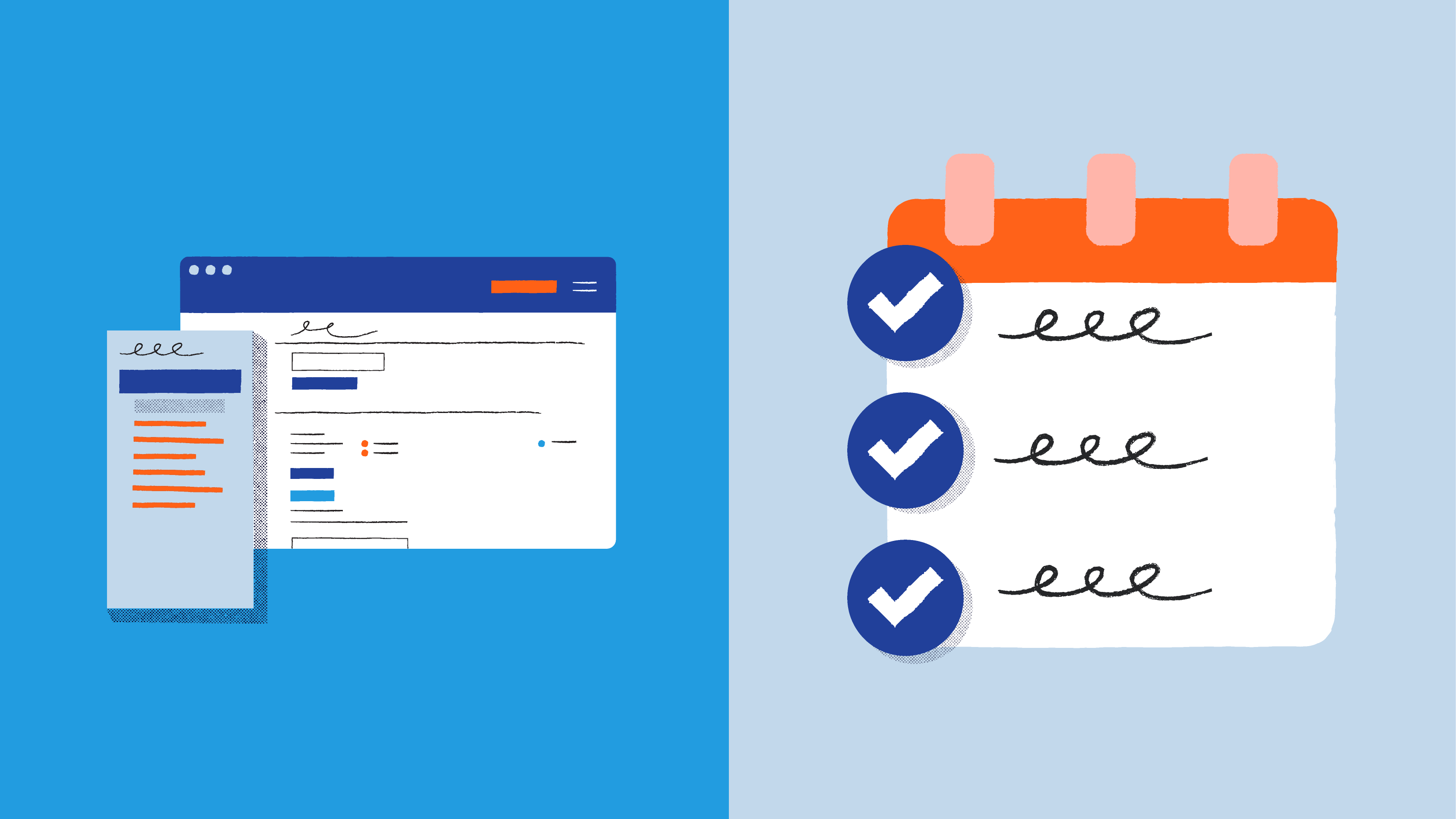
What if a single scan from your smartphone’s camera were the secret to more comfortable healthcare experiences, improved information access, and all-around better patient data management?
Imagine scanning a QR Code to review essential medication details, confirm your doctor’s instructions after a procedure, or check-in for your next appointment. Each touchpoint empowers patients to find critical information and makes frustrating processes smoother—and QR Codes are the key to fostering better patient experiences.
Read on to learn how QR Codes can make a huge difference in the patient experience and how healthcare organizations can use these small squares to strengthen care at every step.
How technology is transforming healthcare
The healthcare industry is laser-focused on the future. Advancing technology is expected to transform patient care and treatment, from the use of AI and machine learning to diagnose and treat illnesses to digital twin technology to find cures faster. While these huge developments will change healthcare as we know it, existing technology now has the potential to greatly improve medical care, starting with our smartphones.
Research from the National Institute of Health found that 85% of healthcare providers use mobile devices one or more times each day, often to look for information or communicate with patients. This means smartphones are an incredibly useful tool that physicians and nurses already have on hand. And the more that organizations streamline and centralize new efficiencies using existing technology, the more naturally change will occur over time.
Introducing QR Codes. Healthcare teams easily scan these helpful codes to access patient data from wristbands or charts and even retrieve information about equipment discreetly. With essential data in the palms of their hands, healthcare teams operate with heightened efficiency and precision in every interaction.
Of course, it’s not just providers that benefit from this technology: 82% of Americans own a smartphone themselves, so QR Codes hold major potential to increase direct information access for patients as well. When patients and their families have the tools and support they need to feel comfortable, they can feel more confident in their care.
QR Codes are a small but mighty tool that’s leading the way into a tech-backed, patient-focused future.
4 key benefits of QR Codes for healthcare
As the healthcare industry adopts new technology meant to better serve and support patients, QR Codes are an ideal tool to foster better interactions between patients and providers. Here are a few of the key reasons they’re a perfect match for healthcare.
1. Accuracy and error reduction
QR Codes offer a flexible solution to help healthcare organizations uphold their most important outcomes: patients’ health and safety. Patients need up-to-date access to information on their medication and care plans, and dynamic QR Codes let providers update link destinations quickly and easily. If a recall or contamination takes place or a patient’s care team changes their treatment recommendation, patients need relevant, real-time updates to ensure they’re safe and cared for. The adaptability of QR Codes allows for greater accuracy and keeps healthcare resources error-free.
2. A touch-free tool
For most of the world, the COVID-19 pandemic shined a light on the importance of enabling touch-free interactions—but in the healthcare world, limiting unnecessary contact has always been a priority to uphold patient safety. With QR Codes, patients and providers alike can limit their contact with everything except their mobile device, from a pen used to complete forms to a thick stack of informational paperwork. Not only do QR Codes enable touch-free connections, but they can make an entire experience less overwhelming for patients and more efficient for providers.
3. Support for everyone
The best technology solutions don’t just assist healthcare providers—they offer holistic support by serving the needs of all audiences: patients, families, and entire healthcare teams. The versatility of QR Codes means you can use them to meet everyone with instant access to essential information:
- Patients can review in-depth information about their diagnosis, view wellness education materials, or request real-time support from their care team.
- Families of patients can find resources and learn about their role in the recovery process.
- Providers can scan to retrieve patient data and care history, medication details, or equipment instructions.
All of these stakeholders play a key role in keeping patients safe and healthy, so giving them touchpoints to find helpful resources through QR Codes colors the entire healthcare journey.
4. Flexible use cases
Whether a patient is visiting a healthcare provider for a routine check-up or a major procedure, they might become confused or need additional information at various times. The ability to scan a QR Code and access essentials from their mobile device can greatly improve their experience and put families at ease. Organizations can use QR Codes for a wide range of purposes, from streamlining check-in to reinforcing procedure prep to offering follow-up instructions. Patients can feel reassured that they’ll have the support they need thanks to accessible QR Codes at every part of their journey.

6 ways QR Codes improve patient experience
Small—but smart—changes throughout a patient’s healthcare journey can add up to all-around more supportive experiences and better relationships between patients and providers. QR Codes help healthcare organizations make these needed adjustments—here are six key ways to use them in healthcare.
1. Medication management
Picture this—you just got a prescription filled, and you arrive home with a few questions and a massive, hard-to-read pamphlet. Not the most patient-friendly experience, right? But with a QR Code instead, patients can scan to head to an easy-to-navigate (and search) webpage or video that offers clear instructions and shares need-to-know information, such as interactions with other medications.
2. Medicine authentication
The pharmaceutical and healthcare industries can keep patients safe and prevent the use of counterfeit substances by using QR Codes to authenticate each medication. QR Codes, with their capacity to store lots of information, let patients or providers scan to confirm details like:
- Manufacturer
- Serial number
- Expiration date
- Medication contents
The more often companies include these codes on medication packaging, the safer patients will be. Plus, as governments introduce regulations designed to ensure critical medicines are safe and verified, this practice isn’t just a recommendation—it’s a requirement.
3. Sample tracking and record-keeping
One of the worst-case scenarios for a patient undergoing a diagnostic procedure is a false negative or positive, so healthcare providers do everything they can to avoid human error like misplacing or mislabeling a sample. A QR Code-powered process for tracking samples and keeping records increases accuracy and lets the team ensure that a patient’s results are correct. QR Codes also ensure real-time tracking so samples don’t get lost and patients get the diagnosis and treatment they need as soon as possible.
4. Records access
Every member of a patient’s care team needs instant access to the individual’s data and care history. Yet one of the major challenges providers face is a lack of interoperability, the seamless exchange of healthcare record data between multiple systems. QR Codes offer a potential solution to limit data silos—by using the code as a unique identifier on patient wristbands or charts, providers can scan to both access and update patient data in a central system.
Around the world, software providers are building QR Code solutions to identify patients in high-urgency situations. In India, the Suraksha QR platform makes users’ critical health information instantly available to emergency healthcare providers when they need it. This technology is a great example of the kind of innovation the healthcare industry is sure to embrace in the years to come.

5. Telehealth visits
Amidst the stressful conditions the healthcare industry faced in 2020 and beyond, Boston Children’s Hospital used QR Codes to innovate, allowing patients and their families to meet with a physician via Zoom. When social distancing was critical, families could scan a QR Code outside the patient’s room to virtually attend conversations with a doctor.
While care looks different now, telehealth remains an important resource for many patients, and QR Codes still play a role. When it’s time for a telehealth appointment, patients can scan to access a secure, customized video link to connect with their care team or sign up to receive appointment reminders with a direct QR Code to the appointment.
6. Patient and family information access
During a loved one’s in-patient procedure or extended hospital visit, families often face distress or confusion. When healthcare providers offer information, resources, and support, the patient experience gets more comfortable and families gain the tools they need to navigate healthcare as a whole.
From waiting areas to patients’ rooms to pamphlets and brochures, QR Codes are a convenient way to empower families with details and next steps at frequent touchpoints during their journey. After patients arrive home, they still need reminders of their care team’s instructions and follow-up steps, and QR Codes on printed materials or medication help there, too.
Making QR Codes secure and accessible
Like any new technology, the introduction of QR Codes into the healthcare environment offers a wide range of benefits—and some challenges and questions as the technology rolls out.
The cybersecurity risk of malicious actors replacing a real QR Code with a fake one designed to collect an individual’s data is real. This is a risk that patients and healthcare providers alike should know about and take steps to prevent. This includes best practices like:
- Scanning QR Codes only from verified sources
- Checking the destination URL, especially before entering sensitive details like payment information, personally identifying information, and health history
- Investing in mobile security software
As healthcare organizations adopt QR Codes into their patient workflows and journeys, team members can reinforce these practices to help keep patients’ data safe.
QR Codes may also pose a challenge for certain populations within the healthcare system—individuals with vision impairment or limited mobility may struggle to scan a code or might not be able to scan at all. Healthcare organizations may need to seek additional tools to assist these patients and provide resources through different channels. The future is likely to bring even more advanced applications for QR Codes, some of which may resolve the current accessibility challenges of this tech.
Support patients when they need it most
It’s not an overstatement to say that our health is one of the most important things we have. Individuals place their lives in the hands of the doctors and nurses who care for them, in both routine visits and during treatment for serious conditions.
The potential for negative outcomes, costs, and potential discomfort can make visits to the doctor or procedure scary for patients. That’s why healthcare organizations are prioritizing the patient experience and seeking technology solutions for communication challenges, inefficiencies, data errors, and more.
QR Codes give healthcare teams the tools to resolve many of the challenges patients encounter and offer new levels of comfort, reassurance, and ease. Explore how Bitly QR Codes can make all the difference for your team and your patients today.